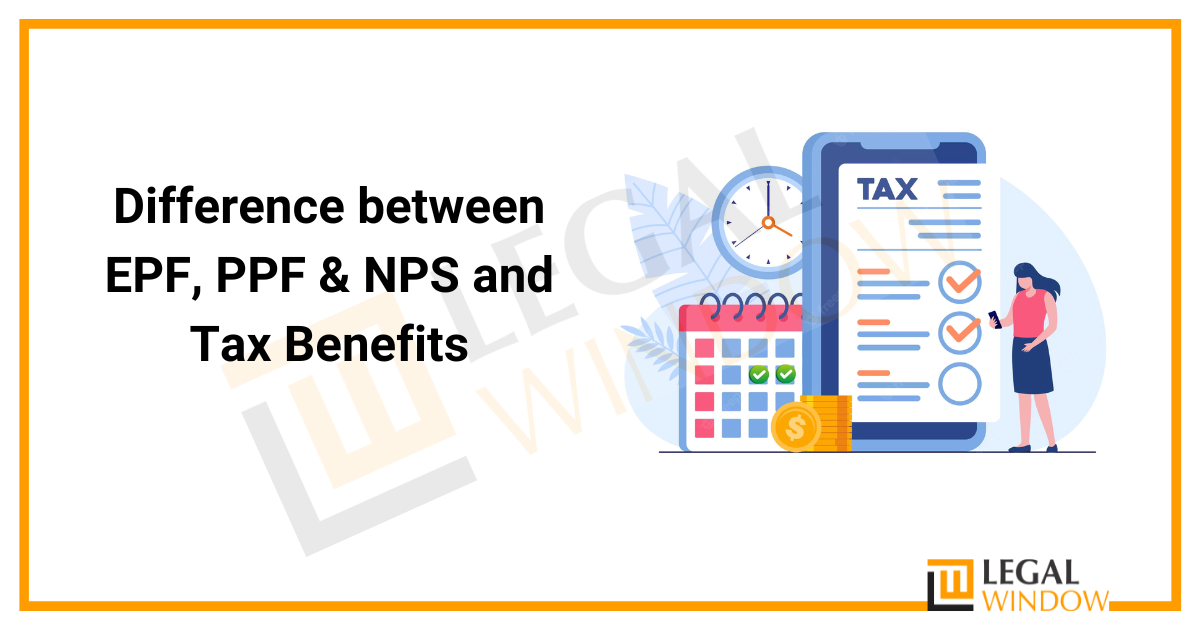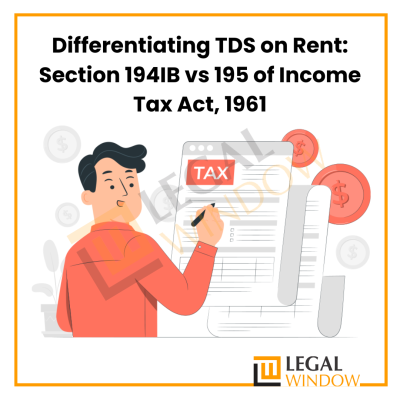
As the financial year draws to a close, all leading employees find themselves working on their investments that will help with tax deductions. It is better to plan your finances in advance than to wait a year. The Government of India has introduced various tax savings programs that offer many benefits to leading employees. If you plan to invest in any of the savings programs available, you should be well aware of the features, benefits and disadvantages that these programs offer. This article discusses difference between EPF, PPF & NPS and tax benefits.
| Table of contents |
Employee’s Provident Fund
This program was initiated under the Employee’s Provident Fund and Miscellaneous Act, 1952, for the benefit of employee post-retirement. The scheme was a collection of employer and employee funds.
Features:
- Under this scheme, both the employer and the employee contribute 12% of the employee’s salary and allowance to the provident fund account on a monthly basis.
- An employee contributes 12% of his or her Employee Provident Fund account and the employer contributes 8.33% to the Employee Pension Scheme and the remaining 3.67% to 3.67%.
- An important point is that an employee can open only one account during his or her lifetime, in the event of a change of employment the previous employer must transfer the value to the new employer.
Benefits under the scheme:
- The plan provides benefits to the employee by saving a portion of his or her monthly salary.
- The interest rate under this scheme is adjusted by the Employee provident Fund office, the current rate under the Employee Provident Fund is 8.5% p.a.
- Employee income and interest accrual are tax-free.
- In the event of the death of the account holder, the nominee or legal heirs may deduct the amount.
Public Provident Fund
This was launched by the Indian government, as introduced by the government is considered a very safe investment.
Features:
- Any Indian citizen can invest in the Public Provident Fund by opening an account at any post office, nationally accredited bank or any major private bank.
- The person who created the account under this program can withdraw the partial amount after the expiration of 5 years.
Benefits under the Scheme:
- Under this program the interest rate is determined on a quarterly basis, the current interest rate i.e. FY 2021-2022 is 7.1%.
- Investments made under this scheme are not risky at all, as interest is paid by the government.
- Investments under the Public Provident Fund provide a deduction of Rs. 1.5 lakh under Section 80C for the financial year.
- An investor may also be able to borrow money deposited under this account after the end of the 3rd to 6th year.
National Pension System:
National Pension System formerly known as the National Pension Scheme, the purpose of which is to invest under this scheme as a contribution by the subscriber into various market-linked tools such as stocks and bonds.
Features:
- The Pension Fund Regulatory Authority of India is the regulatory authority for the National Pension Scheme.
- Eligibility for investment under this program is any Indian citizen between the ages of 18 and 60 who can invest.
- Investments made under the National Pension System will also be invested in 4 different categories such as equity, corporate bonds, government bonds and other assets.
Benefits under the scheme:
- An investor can withdraw part of the money from an account opened under this scheme after the expiration of 3 years.
- The investor may also claim a tax benefit of Rs. 1.5 lakh as per Section 80C of the Income Tax Act.
Benefits of NPS Account
- Low Cost: – NPS is considered to be the least expensive pension system in the world. Administrative and fund management costs are also very low.
- Least complicated:- What the applicant has to do is to open an account with any POPs held at all Post Office Offices throughout India and obtain a Permanent Retirement Account Number (PRAN)
- Flexible: – The applicant can choose his own investment method and Pension Fund or choose Auto option for a better return.
- Mobile: – The applicant can use the account anywhere in the country and can pay contributions in any of these ways. POP-SP regardless of the POP-SP branch the applicant has registered with, even if it changes its city, occupation etc. and also donates to eNPS. The account can be changed to any other category such as Public Sector, Business Model in case the registrar gets a job.
Difference between EPF, PPF & NPS
It is recommended that you carefully grasp the differences between all of the various saving scheme alternatives before making an educated and prudent selection. Individual schemes’ particular features, as well as the advantages they provide, are listed below.
| Parameter | EPF | PPF | NPS |
| Maturity Period | Upon retirement | Upon retirement | After 60 or 70 years of age |
| Interest offered | Decided by Govt; 8.10% in Q1 FY22-23 | Decided by Ministry of Finance, 7.1% in Q1 FY 22-23 | Ranges from 12%-14% depending upon fund’s performance |
| Safety of Investment | Government-backed, safe | Government-backed, safe | Relatively Safe investments, depending upon market fluctuations |
| Eligibility | All Indian employees | All Indian citizens, except NRIs | Any individual |
| Contribution | 12% of employee’s basic and dearness by employee and employer, each | Any amount between Rs.500 and Rs.1.5 Lakh | Minimum Rs.6000; no maximum limit |
| Tax Benefits | Tax-free upto Rs. 1.5 Lakh | Tax-free upto Rs. 1.5 Lakh | Tax-free upto Rs. 1.5 Lakh |
| Pre-withdrawal options | Partial withdrawals, under specific conditions before 5 years subject to TDS deduction | Partial withdrawals under specific conditions after completion of 5 or 7 years | Only 20% of the total amount before retirement |
Final words
Each of these savings schemes offers different benefits and contains different features. Depending on factors such as liquidity, the amount to be invested, the need for withdrawal, refunds, etc. you can make a wise and informed decision about which plan to invest.
Are you seeking somebody who can help you out with Tax Planning? Connect to Legal Window and our experts will help you through the efficient Tax Planning.
CS Urvashi Jain is an associate member of the Institute of Company Secretaries of India. Her expertise, inter-alia, is in regulatory approvals, licenses, registrations for any organization set up in India. She posse’s good exposure to compliance management system, legal due diligence, drafting and vetting of various legal agreements. She has good command in drafting manuals, blogs, guides, interpretations and providing opinions on the different core areas of companies act, intellectual properties and taxation.
Categories
- Agreement Drafting (23)
- Annual Compliance (11)
- Change in Business (36)
- Company Law (148)
- Compliance (90)
- Digital Banking (3)
- Drug License (3)
- FEMA (17)
- Finance Company (42)
- Foreign Taxation (6)
- FSSAI License/Registration (14)
- GST (120)
- Hallmark Registration (1)
- Income Tax (202)
- Latest News (34)
- Miscellaneous (165)
- NBFC Registration (8)
- NGO (14)
- SEBI Registration (6)
- Section 8 Company (7)
- Start and manage a business (21)
- Startup/ Registration (130)
- Trademark Registration/IPR (40)
Recent Posts
About us
LegalWindow.in is a professional technology driven platform of multidisciplined experts like CA/CS/Lawyers spanning with an aim to provide concrete solution to individuals, start-ups and other business organisation by maximising their growth at an affordable cost.









